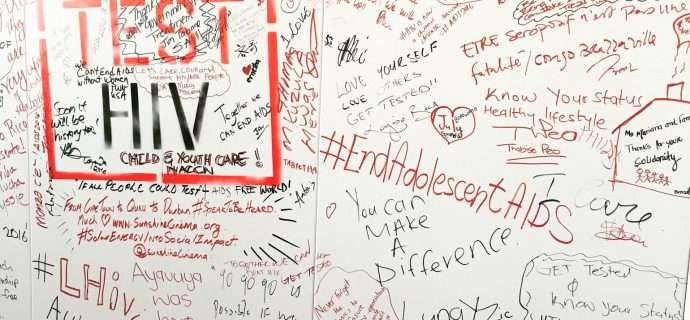It's time we get realistic about addressing HIV

We are in crisis; if we do not mobilize resources for the HIV response right now, we will lose control of the HIV epidemic – these advocacy messages were loud and clear at the International AIDS Conference in Durban last month. But, what was less clear and less discussed at the conference was a realistic approach to how this can be done in the current global health and development climate.
The alarm is not exaggerated. There is a dire gap in the amount of funding required to end AIDS by 2030, including providing life-saving medicines to people living with HIV and preventing onward transmission. Overall donor government spending for HIV in low and middle income countries declined by over $1 billion between 2014 and 2015, including both bilateral and multilateral funding mechanisms. 2.5 million people are infected with HIV annually, and in 74 countries HIV incidence has been rising. Yet, UNAIDS reports that only 20% of global resources for HIV are spent on prevention.
The HIV response has become a victim of its own success. For several decades, HIV has been regarded as one of the most pressing, if not important, diseases to address globally. As such, it has been one of the most well-funded health responses, and we've seen tremendous success because of that – people on treatment can live almost full lifespans, our scientific understanding of the virus has progressed to a point that we can actually talk about a 'cure,' and we have a range of effective approaches to prevent HIV infection in individuals. We can see the end of AIDS in sight.
But, the reality is global health and international development priorities have changed. There are other diseases or health conditions that desperately need our attention. Non communicable diseases kill 38 million people per year, with 28 million of them occurring in low and middle income countries. Unchecked antimicrobial resistance could result in 10 million deaths per year by 2050. Over 2.5 million deaths in children under five are linked to malnutrition each year. The recent Ebola and Zika epidemics have rejuvenated concern over infectious disease outbreaks and brought attention to health system strengthening and increased outbreak vigilance. And those are just current global health realities. Policy makers are having to consider other development priorities – the Sustainable Development Goals have set out 17 broad goals with 169 targets to reach by 2030.
I am not arguing that the HIV response is not a global priority – it absolutely is. However, the vertical approach to funding the HIV response is no longer feasible in the context of competing health and development priorities. Instead, we should be talking more horizontal approaches – integration of delivery and financing of HIV services/programs with other health programs, such as with maternal and child health, sexual and reproductive health, co-infections, and harm reduction programs, or within general health financing systems. The same could be done with other sectors – social protection and education have been shown to influence HIV risk and outcomes. Structural drivers of the HIV epidemic, like poverty, inequality, discrimination, etc, also underlie risk for many other diseases.
Heavy reliance on external aid is not a realistic solution to addressing the HIV funding gap. Competing domestic priorities in some wealthy donor countries, such as hosting refugees and asylum seekers and building climate change resilience, are diverting funds away from international development aid. In this context, a greater share of domestic financing will be required for the HIV response. While this will be challenging, especially for the poorest countries with high HIV burden, we must continue to focus discussions here. While an overall half of HIV funding now comes from domestic resources , 51 countries were reliant on 75% of HIV financing from international sources in 2012. Even among upper middle income countries like South Africa and Botswana that are able to self-finance most of their HIV programs, there are opportunities for more spending, given current domestic HIV expenditure in relation to total health expenditure, disease burden, and GDP. Public-private partnerships and other innovative funding mechanisms have been proposed to fill funding gaps, and more transparency and improving efficiency within HIV and other health programs may lead to more domestic financial resources for HIV.
Without a doubt, we MUST continue to invest in the HIV response; I fear what will happen if we don't. However, those strong advocacy messages from Durban will go nowhere if we are not realistic and pragmatic in how to finance and implement the HIV response. The time of heavy vertical and external funding is over for HIV; it is now time to embrace a more integrated HIV response in the context of the larger global health and development landscape.
This story is republished courtesy of PLOS Blogs: blogs.plos.org.

















